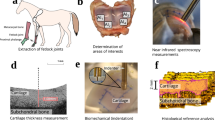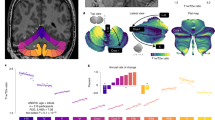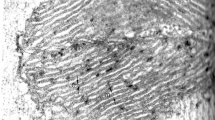Abstract
IT has been found by means of Warburg's manometric method that the metabolism of cartilage is entirely anærobic; it splits glucose to form lactic acid at a rate of about 0.2 c.mm. carbon dioxide (produced from bicarbonate solution) per mgm. dry weight per hour, that is, about a tenth the rate of nearly related connective tissues forming the synovial villi, and a fiftieth the rate of the choroid plexus1. By means of cell counts and corrections for specific gravity and drying, it has been shown that this glycolysis is essentially of the same order per cell as in most other adult tissues. This glycolysis is the same whether measured under ærobic or anærobic conditions. Rabbit cartilage was kept for a fortnight under aseptic anærobic conditions in bicarbonate Ringer solution with glucose, and its glycolysis measured throughout. At the end of the experiment it had only fallen to 0.09 from an initial (c.mm. carbon dioxide per mgm. dry weight per hour in nitrogen) of 0.34.
This is a preview of subscription content, access via your institution
Access options
Subscribe to this journal
Receive 51 print issues and online access
$199.00 per year
only $3.90 per issue
Buy this article
- Purchase on Springer Link
- Instant access to full article PDF
Prices may be subject to local taxes which are calculated during checkout
Similar content being viewed by others
References
Krebs, Tab. Biol. Period., 3, 209 (1933).
Harrop and Barron, J. Exp. Med., 48, 207 (1928).
Author information
Authors and Affiliations
Rights and permissions
About this article
Cite this article
BYWATERS, E. Metabolism of Cartilage. Nature 138, 30–31 (1936). https://doi.org/10.1038/138030b0
Issue Date:
DOI: https://doi.org/10.1038/138030b0
This article is cited by
-
Mucosaccharides and glycoproteins
Ergebnisse der Physiologie Biologischen Chemie und Experimentellen Pharmakologie (1959)
-
Untersuchungen an Knorpeltransplantaten mit markiertem Phosphat
Die Naturwissenschaften (1958)
-
Neuere Untersuchungen �ber kollagenes und lymphoretikul�res Gewebe in der Haut
Archiv f�r Dermatologie und Syphilis (1954)
-
Metabolism of Cartilage
Nature (1936)
Comments
By submitting a comment you agree to abide by our Terms and Community Guidelines. If you find something abusive or that does not comply with our terms or guidelines please flag it as inappropriate.



